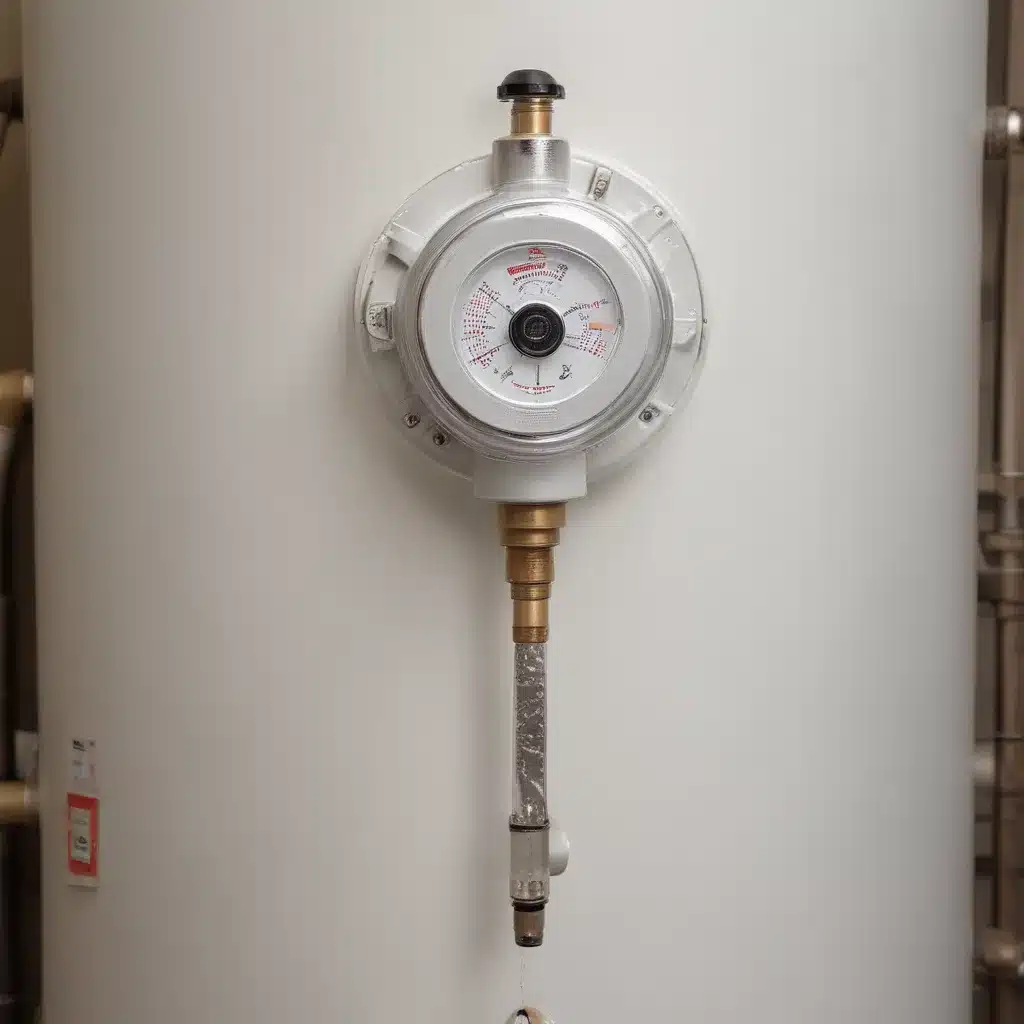
As an experienced water heater specialist, I’ve seen firsthand the importance of proper pressure relief valve maintenance in safeguarding your home’s plumbing system. We learned this the hard way when dealing with complex water heater issues… Thermal expansion, a common occurrence in closed plumbing systems, can wreak havoc if left unchecked, leading to costly repairs and even potentially dangerous situations. In this comprehensive guide, I’ll walk you through the ins and outs of pressure relief valve maintenance, helping you understand the risks of thermal expansion, meet local plumbing codes, and keep your water heater running smoothly.
Now, this might seem counterintuitive when dealing with water heaters…
Understanding Thermal Expansion
When water is heated in a closed plumbing system, it expands in volume, creating a dangerous increase in pressure. This phenomenon, known as thermal expansion, can cause serious problems if not properly addressed. As the pressure builds, it can wear out seals, damage solenoid valves, and even rupture pipes. In extreme cases, the increased pressure in a gas water heater can cause the flue to collapse, leading to a carbon monoxide leak or even a water heater explosion.
Indicators of thermal expansion include:
- Dripping faucets: The increased pressure can force water past the seals and washers, causing drips.
- Running toilet: The pressure can push water past the toilet’s fill valve, causing the toilet to continuously run.
- Banging pipes: The pressure can cause water hammer, resulting in loud banging noises in the plumbing system.
To mitigate the risks of thermal expansion, it’s essential to have a properly functioning pressure relief valve on your water heater. This valve is designed to release excess pressure, preventing damage to your plumbing system and water heater.
Pressure Relief Valve Maintenance
Regularly maintaining your pressure relief valve is crucial to ensuring its proper function and protecting your home from the dangers of thermal expansion. Here’s what you need to know:
Testing the Pressure Relief Valve
Test the pressure relief valve annually to double-check that it’s operating correctly. To do this, simply lift the lever on the valve and check that water flows freely from the discharge pipe. If the valve doesn’t open or the water flow is restricted, it’s time to replace the valve.
Clearing Obstructions
Over time, debris and mineral buildup can clog the pressure relief valve, preventing it from functioning properly. Flush the valve periodically to clear any obstructions. This can be done by lifting the lever and allowing the water to flush out any accumulated sediment.
Replacement Guidelines
Replace the pressure relief valve every 3-5 years, or sooner if it’s not functioning correctly. Look for a valve that meets the specific requirements of your water heater, including the appropriate temperature and pressure ratings.
Discharge Pipe Maintenance
The discharge pipe connected to the pressure relief valve is also crucial to the system’s functionality. double-check that the pipe is the proper size and material, and that it’s routed to a safe location where the discharged water won’t cause any damage.
Meeting Plumbing Codes
Local and national plumbing codes typically require the installation of a pressure relief valve on all water heaters. Failure to comply with these codes can result in hefty fines and, more importantly, put your family’s safety at risk.
According to the 2015 St. Louis County Plumbing Code, “Every water heater installation shall be provided with an approved, listed, and properly sized temperature and pressure relief valve.” Similarly, the 2020 Kentucky Plumbing Code states that “Every water heater shall be provided with an approved, listed, and properly sized temperature and pressure relief valve.”
By keeping your pressure relief valve well-maintained and in compliance with local codes, you’ll be taking a crucial step in protecting your home and your family.
Thermal Expansion Control Devices
In addition to the pressure relief valve, there are other devices that can help manage the effects of thermal expansion in a closed plumbing system. One of the most common is the thermal expansion tank.
Thermal Expansion Tanks
Thermal expansion tanks feature a rubber bladder or diaphragm that separates an air chamber from the rest of the tank. As water expands, it enters the expansion tank, compressing the air. Once the expansion has stopped, the compressed air pushes the water back into the plumbing system, preventing the buildup of dangerous pressure.
It’s important to note that the water heater’s temperature and pressure relief valve should not be used as a means of controlling thermal expansion. Instead, contact a plumbing professional if you suspect a problem, and they can install the appropriate thermal expansion control methods.
Preventing Thermal Damage
By maintaining your pressure relief valve and implementing other thermal expansion control devices, you can effectively prevent the costly and potentially hazardous consequences of thermal expansion. Keep a close eye on your water heater and plumbing system, and don’t hesitate to call a qualified plumber if you notice any issues.
Regular maintenance, including flushing the water heater and inspecting the pressure relief valve, should be part of your annual home maintenance routine. This will help double-check that your water heater and plumbing system continue to function safely and efficiently.
Remember, proper pressure relief valve maintenance is not only a matter of code compliance but also a crucial step in safeguarding your home and your family. By taking the time to understand and address thermal expansion, you’ll be better equipped to keep your water heater and plumbing system in top condition.
For more information on water heater maintenance, plumbing solutions, and installation techniques, be sure to visit WaterHeaterPick.com. Our team of experts is dedicated to providing homeowners and plumbing professionals with the insights and resources they need to keep their water heating systems running smoothly.
Example: Basic Water Heater Maintenance for Homeowners 2023

